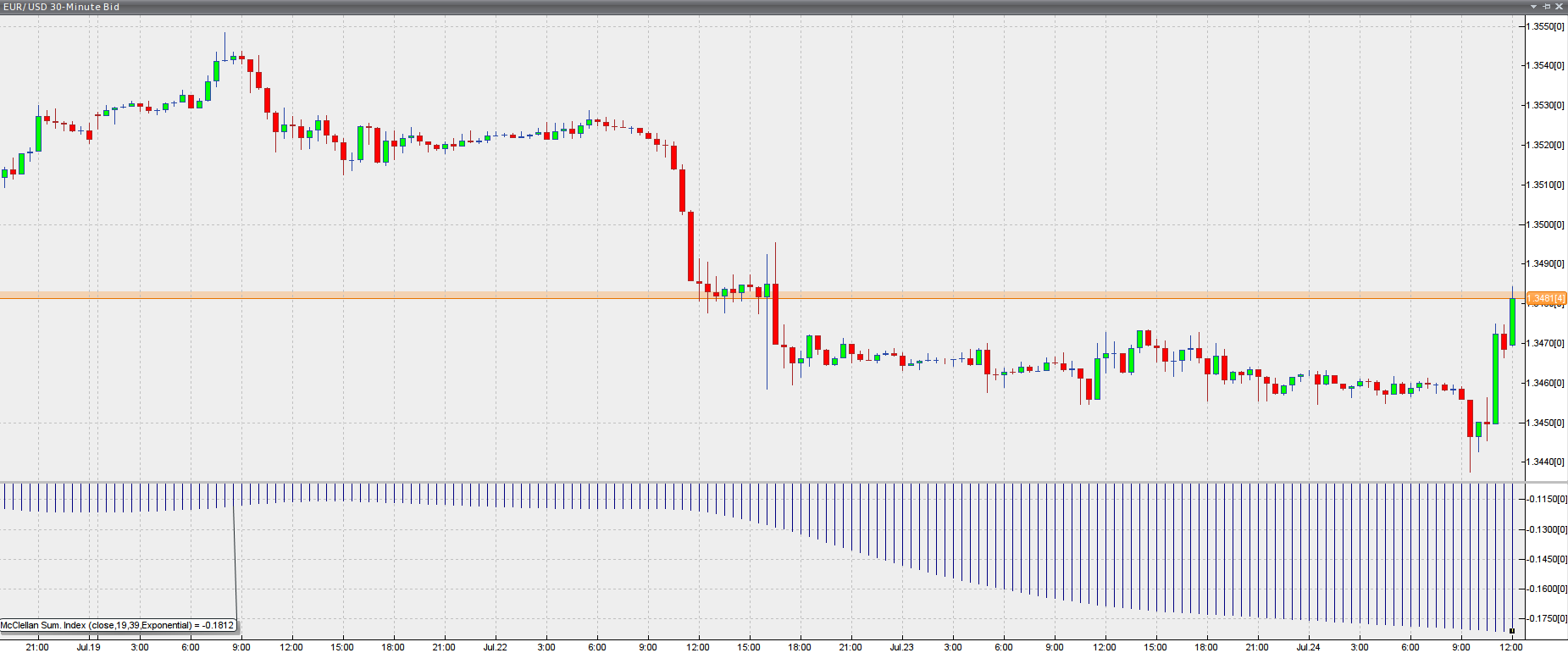McClellan Summation Index
This lesson will cover the following
- Definition
- Calculation
- Interpretation
Developed by Sherman and Marian McClellan, the McClellan Summation Index is a breadth indicator that builds up on the McClellan Oscillator, which itself is a breadth indicator based on the difference between price advances and declines.
The McClellan Summation Index is calculated by adding all the McClellan Oscillator values. Thus, the McClellan Summation Index serves in medium and long-term trading, while the Oscillator attempts to predict trend reversals or continuations in the short and medium-term.
The Summation index generates entry signals as it crosses beneath and above the zero line. Apart from these crossovers, just like the McClellan Oscillator, trade signals can be derived from bullish and bearish classic and hidden divergences, as well as directional movement and oversold/overbought levels which can indicate that a reversal has become more likely. Here is what the indicator looks like in a trading platform.
Chart source: VT Trader
Calculation
We said that the Summation index is running the total values of the McClellan Oscillator. Thus, the formula looks as follows:
McClellan Summation Index = Previous periods Summation Index + current periods McClellan Oscillator.
Note that the first Summation Index equals the value of the McClellan Oscillator for the respective period.
Due to the way it is calculated, we can logically reach to the conclusion that the summation index is a slower variety of the McClellan Oscillator. As such, it will be moving smoother than the oscillator, it will be crossing the zero line fewer times and will be forming divergences less frequently.
The summation index will be on the rise when the McClellan Oscillator is positive, and will be declining when the oscillator is negative. However, because the Summation Index is much slower than the Oscillator, the latter will need to mark a certain number of positive/negative readings in order to be able to push the Summation index above or below the zero line and keep it there. Thus, extended moves by the Oscillator in either direction will cause the summation index to continuously trend higher.
Trading the Summation Index
Due to its logical similarity to the McClellan Oscillator, it is therefore traded the same way. Traders are also closely watching for both classic and hidden divergences between the indicator and the price, as well as determining overbought and oversold conditions. Divergences often precede moves in the indicator but a divergence solely is not reliable enough to enter a position, thus further analysis with the help of other tools is required. At the least, a divergence needs to be confirmed by a strong move in its direction, which reverses the previous trend.
A classic bullish divergence is at hand when the price marks a lower low, while the indicator rises to a higher low. A classic bearish divergence occurs when the price jumps to a higher high, but the indicator only manages to reach a lower high.
A hidden bullish divergence is at hand when the indicator marks a lower low, while the price only drops to a higher low. A hidden bearish divergence is evident when the oscillator marks a higher high, while the price is at a lower high.
The McClellan summation index can also be combined with a moving average to help identify down-turns and up-turns. The moving averages trackback period depends on the traders unique preferences. Also, just like the oscillator, zero-line crossovers tend to trigger entry orders in the direction of the crossover.
